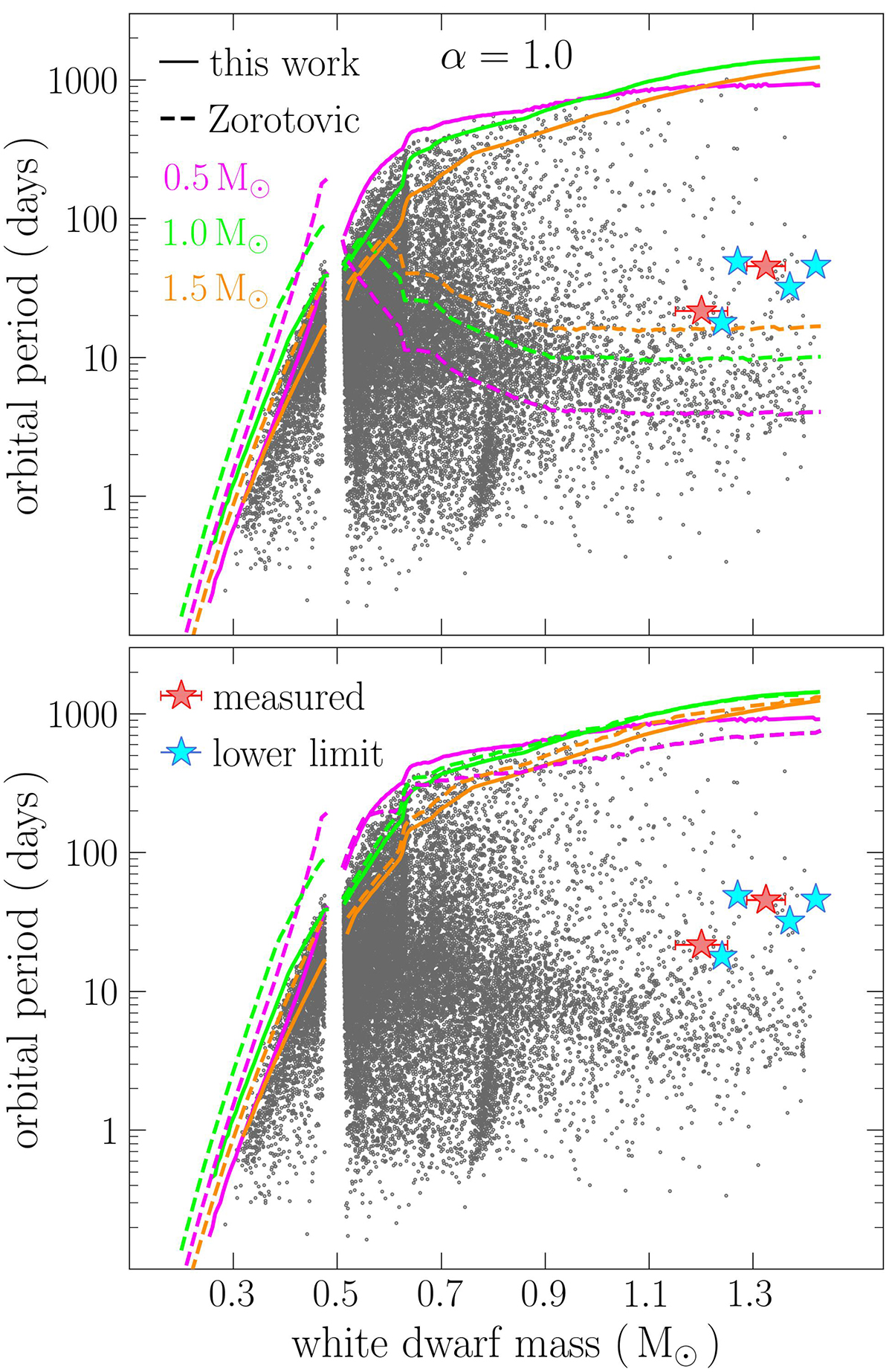Fig. 4.

Download original image
Maximum orbital period just after CE evolution as a function of WD mass computed in this work (solid lines) and using the algorithm based on a grid for possible progenitors of the WDs from Zorotovic (dashed lines) plotted against the outcome of our post-CE binary population synthesis assuming α = 1 and no other sources of energy than gravitational and thermal. The colours of the lines and markers are the same as those in Fig. 1. In the top panel the dashed lines are calculated restricting the progenitor’s luminosity to be lower than the peak luminosity of the first thermal pulse (as in e.g. Rebassa-Mansergas et al. 2012), while in the bottom panel this restriction is not used, allowing for progenitors on the TP-AGB phase. It is evident that the approach employed by Zorotovic leads to much shorter maximum orbital periods for systems with massive WDs when excluding progenitors on the TP-AGB in comparison to our method. This explains why it was not possible to reproduce the long-period post-CE binaries with oxygen-neon WDs using that method. By removing the luminosity restriction and allowing progenitors in the TP-AGB phase, the results obtained with the Zorotovic’s algorithm are very similar to our results.
Current usage metrics show cumulative count of Article Views (full-text article views including HTML views, PDF and ePub downloads, according to the available data) and Abstracts Views on Vision4Press platform.
Data correspond to usage on the plateform after 2015. The current usage metrics is available 48-96 hours after online publication and is updated daily on week days.
Initial download of the metrics may take a while.


